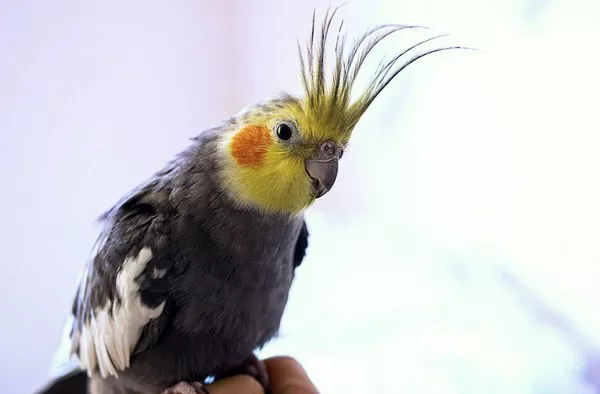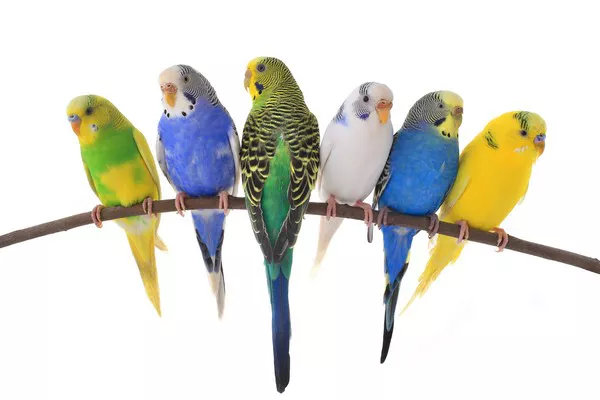Corn snakes (Pantherophis guttatus) are a popular species of non-venomous constrictor snakes, known for their docile temperament and striking color patterns. These reptiles are often kept as pets due to their manageable size, gentle nature, and ease of care. However, one of the most fascinating and unique aspects of a corn snake‘s biology is its sense of smell, which differs greatly from humans and many other animals.
In this article, we will explore how corn snakes smell, the sensory organs they use to detect odors, and how their sense of smell helps them survive in the wild. We’ll also discuss the implications of their scent perception in captivity and how it contributes to their overall behavior and interaction with their environment.
1. The Importance of Smell for Corn Snakes
For snakes, and particularly corn snakes, the sense of smell plays a crucial role in their daily lives. Snakes are highly dependent on their ability to detect scents in their surroundings for a variety of reasons, including hunting, communication, and navigation. Unlike humans, who primarily rely on their sense of sight and hearing, snakes primarily use smell to “see” their environment.
In the wild, corn snakes use their keen sense of smell to locate prey, avoid predators, and find potential mates. They rely on chemical signals, such as pheromones and other scent molecules, to gather information about their surroundings. In captivity, understanding how a corn snake smells and how it uses scent can help improve their care and enrichment.
2. The Snake’s Olfactory System: How It Works
The sense of smell in corn snakes (and snakes in general) is vastly different from humans. While humans have a nose that detects smells through the nasal passages, snakes have a specialized system that allows them to “smell” in a much more profound and detailed way.
Snakes possess an organ known as the Jacobsen’s organ or vomeronasal organ (VNO), which is located in the roof of the mouth. This organ is not used in the same way as the human nose but rather to detect chemical signals that are carried through the air or onto surfaces.
Jacobsen’s Organ and the Flicking Tongue
A unique and fascinating feature of corn snakes is their forked tongue, which they constantly flick in and out of their mouths. This behavior is not just for tasting the air; it is directly related to the snake’s sense of smell. The forked tongue collects microscopic scent particles from the environment and carries them back into the mouth, where they are analyzed by the Jacobsen’s organ.
The Jacobsen’s organ is highly sensitive to certain chemical signals, such as pheromones or other scent molecules. By “smelling” with their tongue, corn snakes can detect the presence of potential prey, predators, or mates, and even identify specific environmental features, like humidity and temperature, that are crucial for their survival.
How the Sense of Smell Works for a Corn Snake
When a corn snake flicks its tongue, it is essentially “collecting” scents from the air. The two prongs of the tongue help to pick up different scent particles from different areas in the environment. The snake then retracts its tongue into its mouth and inserts it into the Jacobsen’s organ, where the chemical signals are processed and interpreted.
Once the scents are processed, the brain of the corn snake interprets these signals and triggers a variety of responses, such as hunting for food, avoiding danger, or seeking out a mate. The smell of food will stimulate the snake to search for prey, while the scent of a predator may trigger a defensive response. Similarly, the presence of a mate or rival can influence a snake’s behavior during the breeding season.
3. The Role of Smell in Hunting and Locating Food
For a corn snake, the sense of smell is directly linked to its ability to find food. Corn snakes are primarily carnivorous, and they typically hunt small rodents, birds, and lizards. These snakes use their sense of smell to locate their prey, even when the animal is hidden in burrows or under rocks.
One of the primary ways that corn snakes use their sense of smell to locate prey is by detecting the scent trail left behind by their prey. As a prey animal moves through the environment, it releases scent molecules that linger in the air and on surfaces. By flicking their tongues and processing these chemical cues, corn snakes are able to track the scent trail to the source.
In the wild, corn snakes are opportunistic hunters, meaning they will feed on whatever prey is available. However, they rely heavily on their sense of smell to guide them toward prey. Once a snake locates a potential meal, it will use its keen sense of smell to determine if the prey is still present and whether it is worth pursuing.
In captivity, corn snakes are typically fed pre-killed or frozen-thawed mice or other small animals. However, even in a captive environment, they may still rely on their sense of smell to detect food. A snake’s behavior may change when it senses the scent of food in its enclosure. It may become more active, searching for the source of the scent, and may even strike at the food item if it is moved in front of the snake.
4. Smell as a Defense Mechanism: Avoiding Predators
In addition to helping corn snakes find food, their sense of smell also plays an important role in avoiding danger. Like most snakes, corn snakes are preyed upon by a variety of animals, including birds of prey, larger mammals, and other snakes. To survive, corn snakes must be able to detect the scent of approaching predators and take evasive action.
By using their highly sensitive sense of smell, corn snakes can detect the presence of a predator from a distance. For example, a bird of prey may emit a specific scent that the snake can recognize. When a corn snake detects the smell of a predator, it may respond by hiding, retreating to a burrow, or remaining motionless to avoid detection.
Additionally, corn snakes are often very good at detecting the scent of other snakes. Some species of snakes are known to be cannibalistic, meaning they will hunt and consume smaller snakes. A corn snake may avoid areas where the scent of larger, potentially dangerous snakes is present. This helps the corn snake reduce the risk of being eaten or attacked.
5. Smell in Communication and Social Behavior
While corn snakes are not particularly social creatures, they do use their sense of smell to communicate with other snakes, especially during the breeding season. Pheromones are chemical signals produced by animals to communicate with one another, and corn snakes are highly sensitive to these signals.
During the mating season, male corn snakes often use their sense of smell to detect the presence of females that are ready to breed. Females will release specific pheromones to signal their readiness to mate, and males will follow these scent trails to locate them. The male may then engage in a mating ritual, which often involves the two snakes rubbing their bodies together and attempting to align their reproductive organs.
In addition to mating, corn snakes may use scent to establish territory or communicate with other snakes. In some cases, the presence of strong chemical signals may indicate the territory of a dominant or larger snake. These signals can act as warnings to other snakes to stay away, reducing the chances of conflict or competition.
6. Smell and Captivity: Implications for Corn Snake Care
When keeping a corn snake as a pet, understanding its sense of smell can help you create a more comfortable and stimulating environment for the snake. Corn snakes rely on their sense of smell to explore their surroundings and interact with their environment. By mimicking the sensory cues of their natural habitat, you can promote the well-being of your pet snake.
For example, when feeding a corn snake, it’s important to consider its reliance on smell. Corn snakes are unlikely to recognize their food by sight, as they don’t have the sharp vision that many other animals possess. Therefore, placing food in an area where the snake can detect it using its sense of smell will increase the likelihood of successful feeding.
In addition to food, corn snakes may also benefit from environmental enrichment that stimulates their sense of smell. Introducing new scents, such as by changing the substrate in the enclosure, adding plants, or offering live prey, can encourage natural behaviors such as exploration and hunting. However, it’s important to ensure that any new scents are safe and non-toxic to your snake.
Lastly, understanding that corn snakes may be more sensitive to the smells in their environment can help prevent stress. Strong or unpleasant smells, such as strong chemicals or cleaning agents, should be avoided in the snake’s enclosure. A clean and scent-free environment can help maintain a calm and healthy snake.
Conclusion
Corn snakes have a remarkable and highly specialized sense of smell that plays a vital role in their survival. By using their forked tongues and Jacobsen’s organ, these snakes are able to detect a wide range of scents in their environment, from the trails of potential prey to the chemical signals of predators and mates. Their keen sense of smell is central to their hunting strategies, communication, and overall behavior.
For pet owners, understanding how corn snakes smell and how they use scent can improve the care and enrichment of these fascinating creatures. By creating an environment that stimulates their sense of smell, pet owners can help their corn snakes thrive in captivity, mimicking the natural conditions that they would experience in the wild.
Whether you’re a seasoned reptile enthusiast or a first-time snake keeper, appreciating the unique and vital role of smell in corn snakes’ lives enhances the connection you share with these incredible animals.
Related Topics:























